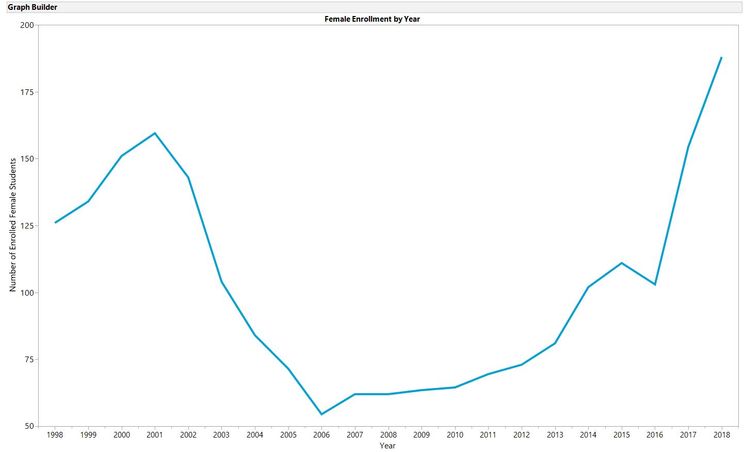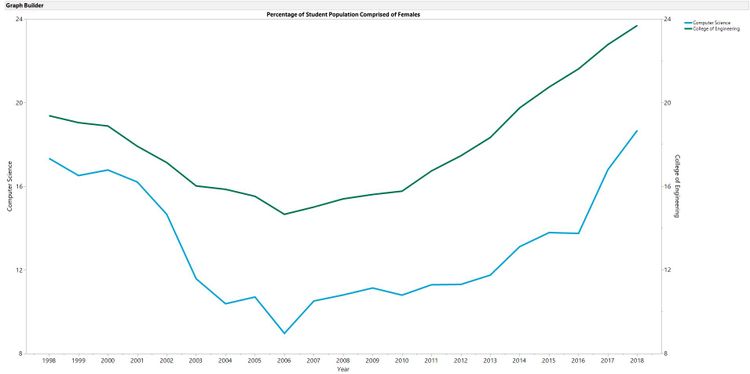“Where do you see yourself in five years?” This is a question I’ve gotten asked a lot through casual conversations, academic advising meetings and job interviews. Answering this question has never been a challenge for me because the ENTJ in me has painted an exact vision for my future and mapped out exactly how I plan on getting there. Five years ago, I was convinced that the one thing I didn’t want to do in my career was engineering or anything solely computer-related. Computer programming always intimidated me, and I thought that people who succeeded as programmers were born with some special ability that I lacked.
If someone had told me back then that five years later, I would now be one semester from graduating with a degree in computer science at North Carolina State University, I never would have believed them. Today, I am surrounded by so many female professors, coworkers and other role models that it sometimes feels to me like the tech industry has changed drastically for women over time. I was extremely surprised when I extracted data that contradicted that perspective. I dug through the NC State Computer Science Department’s enrollment data, pulled out semester-by-semester female headcounts and plotted my data using JMP. Here’s the first thing I saw as I explored the data:

As of spring 2018, only about 19% of undergraduate computer science students were females. As the graph shows, this is the most female representation the department has seen, and it looks like that number is continuing to grow. Something that immediately caught my eye with this graph was the drastic drop in enrollment from 2001-2005. In order to understand what could have led to this significant decrease in enrollment, I plotted enrollment data for both male and female students, as well as some events in the tech industry that may have contributed to this pattern.
I am speculating that the dot-com crash may have contributed to the rapid decrease in enrollment after 2000, regardless of gender.
In an effort to focus on trends in female enrollment, I plotted how much of the student population is female in both the College of Engineering and the computer science major.

While the engineering population is 23% female, the computer science population is behind at 19%. Of course, this is only a 4% difference, but 4% of students at a school with a student body of 25,000 struck me as a bigger deal than that number is letting on. Out of the 1,210 females enrolled in engineering as of Spring 2018, only 171 of them are pursuing computer science degrees.

When I saw that 49% of biomedical engineering students and 59% of textile engineering students are female, I had to wonder why computer science is lagging. The other majors that lack female enrollment are electrical and computer engineering, mechanical and aerospace engineering, and nuclear engineering – is there a common factor that is contributing to this trend?
It is not enough to just acknowledge the lack of women in the computer science field. These numbers are just a start in figuring out the “why” in current female enrollment trends and the “how” in fixing that problem. I believe that the current professionals and educators in the tech industry hold the key to this, which is helping young women discover their value in such a male-dominant field.
Over the last three months that I have been with JMP, I have met so many inspiring female role models. I owe a significant piece of my passion for computer science to women like @Audrey_Shull, @Diana_Levey, @Mandy_Chambers, @shannon_conners, and @fiona_kelly who challenge the status quo and help break down barriers every day. The next time someone asks me “Where do you see yourself in five years,” I’ll answer that I see myself advocating for and providing guidance for young females as they transition into the tech industry, just as the amazing role models in my life continue to do for me.